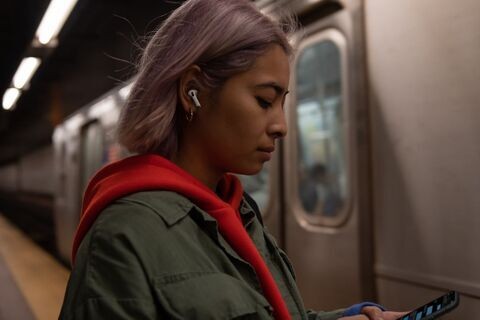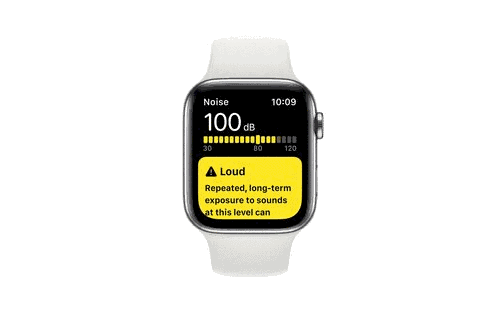Prevention is “hear” for you
By Omnia Health Magazine Staff
Hearing loss, which worsens with age, affects more than 360 million people worldwide. This is about 5 per cent of the world's population. Everyday people are at risk of hearing loss due to recreational noise, not to mention there is a growing number of undiagnosed people who are unaware of this issue. In the UAE, there are a significant number of people affected by deafness and hearing disabilities, which is why more and more awareness campaigns are coming to light on the subject. Hearing loss does not only affect immediate perception, but can also contribute to cardiovascular diseases, high blood pressure, hypertension and even dementia.
Looking at recent numbers from the World Health Organization (WHO), roughly half of people aged 12-35 are at risk of hearing loss. That’s due in no small part to the explosive growth in "personal listening devices”. Young people in particular are nowadays wedded to headphones and love to crank the volume up. Whether at the gym, at a concert or in their own cars, they are rarely aware that exposure to loud music could be doing irreparable damage to their hearing.
There’s a lot of evidence to show the more a person is aware of the effects of noise on their own hearing, the more likely they are to make changes and do things to protect it. It is really up to individuals and big industries to create a badly needed change. Companies such as Apple have made it easier to recognise loud noises in the future by examining factors that impact hearing health. The Apple Hearing Health Study is the first of its kind to collect data over time in order to understand how everyday sound exposure can impact hearing. The study data will collect information to make sense of how exposure to sound can affect hearing over time.
Nelly Attar, 29, owner of “Move Riyadh Studio", Saudi Arabia’s first dance studio, loved her music loud in her younger days. She says "I used to always blast music in my ears to dance, put the highest volume in my car and go out often to places with very loud music. I took my ears for granted for many years thinking nothing could go wrong”.
She shares: “I remember having a very bad ear infection one time and going to a friend's birthday celebration. Once safely back home that night I started experiencing a ringing sound in my ears. Since then I developed tinnitus permanently, it’s been eight years now".
Tinnitus is a sound in the head with no external source that may come from one or both ears, from inside the head, or from a distance. It may be constant or intermittent, steady or pulsating.
Attar adds "My ears were delicate and fragile and long exposure to loud sounds throughout my teenage years prompted me to develop tinnitus. I had warning signs, but if you don’t know how to read those signs, you continue to ignore them until it’s too late.”
Today, Attar tries to make healthy lifestyle choices for healthy ears for her and her trainers. “I am glad to have the Noise app at the convenience of my wrist with my Apple Watch to help me measure and monitor not only the music volume but also the noise environment around me”.
She highlights: “All my trainers at Move are also instructed to follow the same for their own health and the health of our clients. I want them to have fun, listen to music, and dance, but also take care of their ears".
Stephan Jansen Van Vuuren, 41, a Dubai-based Air traffic controller, shares “Given the nature of my job, I undergo stringent medical examination on an annual basis where my eyes and ears are tested. It was during one of these tests that I noticed a bit of a loss. My doctor at the time suspected the sound of the rifle fired during my Military service caused the initial damage to one ear, the one closest to the rifle. But later on, I suspect loud music, aircraft noise at air shows and the noise of a hairdryer I use to leave "on" to help me fall asleep, have also contributed to the damage. Today, any sudden unannounced loud noise would give me such a fright that I would lash out if it was created by a person in my proximity".
Dr. Lubaina Sharafally, a clinical audiologist at the American Hospital says “It’s so encouraging to see how Apple Watch Noise feature can assist one to identify noise and limit the effects of noise exposure, as noise can damage hearing in a silent manner and create irreversible loss leading to severe communication difficulties”.
Dr. Sharafally explains, “People exposed to noise levels over 85 decibels for long durations are at an increased risk for acoustic trauma. This trauma can occur in a work setting, aviation industry, oil & gas or construction where individuals like Stefan are exposed to loud noise for long durations repetitively”.
The doctor further cautions, “Recreational noise exposure is commonly seen in people who like to go to shooting ranges or noisy clubs without exercising any hearing protection i.e. ear plugs or earmuffs. Need for hearing conservation i.e. earmuffs, customised hearing protection, ear plugs apply to all ages and to any person who is exposed to loud sounds or noise. Once hearing is lost, it won’t come back, so it's important to understand the hazards of noise exposure, practice good hearing health and protect your hearing for life.”
So, what are the available solutions to protect hearing and limit hearing loss? Here are simple preventive lifestyle changes or actions one can make to save their hearing and prevent permanent damage.
Listen to what your ears are telling you
If you start hearing or experiencing buzzing or ringing sounds in your ears it is a sign that you should give your ears a rest, allow yourself a day of peace and quiet and turn the volume well down in the future. The new Noise app on Apple Watch, alerts you when things are getting a little too loud and decibels rise to levels that can impact your hearing. It also uses built-in microphones to measure the noise levels in your environment anytime. This information will then be logged into your health app as either “OK” or “Loud” based on guidance from the WHO.
Learn the 60x60 rule
Everyone loves music, but since the combination of volume and length of listening can cause major damage, researchers recommend listening to music at 60 per cent of the maximum volume for no more than 60 minutes a day. Ears that get a rest have time to recover and are less likely to be permanently damaged. Same rule applies if you are sending music directly to your ears via headphones.
Use volume control and sound check on your device
Aware of consumer concerns, some companies offer a volume limit setting. In Apple, for instance, you can go to Settings>Music>Volume>Limit and adjust the maximum volume you would allow yourself. Alternatively, you could use the iPhone’s Sound Check feature, which when turned on will give a better music-listening experience but also protect hearing.
Use noise-dampening or cancelling headphones
If you are listening to music via headphones, the noise around you may push you to turn the volume up, increasing your chances of hearing loss. To avoid the habit, it could be worth investing in some noise-cancellation earphones like the AirPods Pro, with which noise-cancellation will cut other external unwanted sounds, so a lower volume is needed to still enjoy the same audio experience.
Have ear protection on hand
There are many different ways to protect your ears. Hearing protection comes in various types, including ear plugs, earmuffs or molds, wadding and headphones. Always have an option on hand, especially when you know you’re heading to a loud place.
























